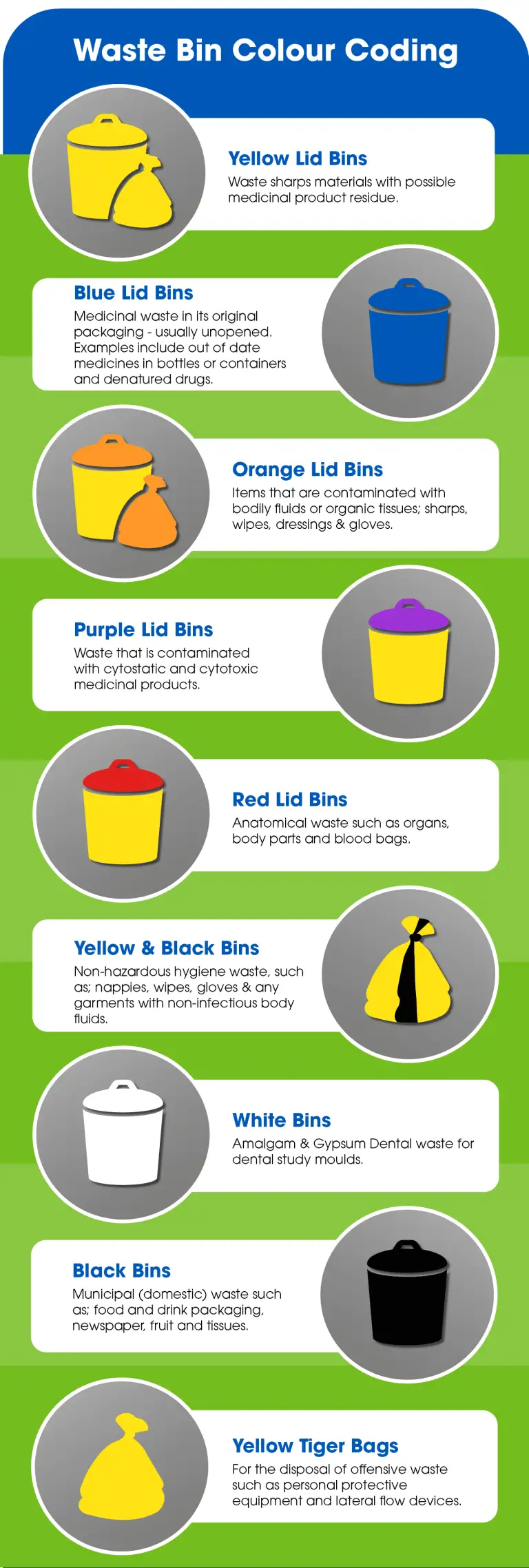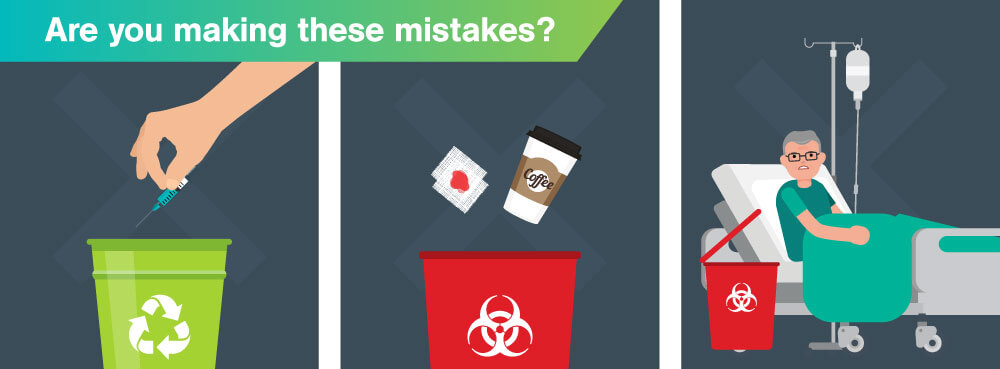Your Ally in Medical Waste Removal: Expert Service with Environmental Treatment
Wiki Article
Sustainable Solutions for Medical Waste Disposal
The correct administration and disposal of clinical waste is essential in keeping a sustainable and risk-free health care system. As the volume of medical waste proceeds to increase, finding lasting services ends up being increasingly vital. This requires the adoption of ecologically friendly and reliable methods for dealing with clinical waste. This intro will certainly discover numerous lasting remedies for clinical garbage disposal, consisting of waste partition and sorting, on-site waste therapy systems, reusing and reuse programs, waste-to-energy conversion innovations, along with cooperation and education and learning campaigns. By carrying out these remedies, medical care centers can not only reduce the ecological effect of clinical waste, however additionally make sure the safety of medical care employees and the public.Waste Segregation and Arranging
The procedure of waste partition and sorting is important in making sure correct monitoring and disposal of clinical waste. Medical waste is categorized into various classifications based upon its possible threat to human health and wellness and the atmosphere. Appropriate partition and sorting of waste assistance to lessen the risk of contamination and make certain that each kind of waste is dealt with and disposed of appropriately.The primary step in waste segregation and sorting is to recognize and divide various sorts of clinical waste at the factor of generation. This involves acknowledging the various categories of waste, such as transmittable waste, sharps waste, pharmaceutical waste, and chemical waste. medical waste disposal. Each group requires particular handling and disposal approaches to avoid harm to medical care employees, individuals, and the environment

On-site Waste Treatment Equipments
Proceeding from the previous subtopic on waste partition and sorting, an efficient remedy for sustainable medical waste disposal is the application of on-site waste therapy systems - medical waste disposal. These systems permit medical care facilities to treat their clinical waste on-site, reducing the need for transport and disposal at off-site centers. On-site waste therapy systems generally include innovations such as autoclaves, microwave systems, or chemical disinfection devicesAutoclaves, frequently utilized in medical care setups, utilize high-pressure heavy steam to sanitize and deal with medical waste. This procedure efficiently kills germs, viruses, and other possibly unsafe microbes, providing the waste secure for further handling and disposal. Microwave systems, on the other hand, usage microwave radiation to warmth and deal with the waste, accomplishing similar results to autoclaves.
Chemical sanitation devices include using chemicals to disinfect and deal with medical waste. These units can make use of different disinfectants, such as chlorine-based solutions, to reduce the effects of virus and lower the risk of contamination. The treated waste can after that be safely thrown away in routine waste streams or go through further therapy, such as shredding or incineration.
Applying on-site waste therapy systems uses a number of benefits. It decreases the environmental impact related to transporting medical waste to off-site centers, minimizing carbon emissions and the danger of crashes during transportation. Additionally, it provides health care facilities with more control over the treatment process, making sure compliance with guidelines and minimizing the capacity for unauthorized accessibility to sensitive medical waste.
Recycling and Reuse Programs
To better enhance lasting clinical waste disposal practices, health care centers can implement recycling and reuse programs, building upon the foundation of on-site waste therapy systems. Reusing and reuse programs provide an added layer of ecological responsibility by drawing away medical waste from garbage dump and finding alternative uses for sure products.One key aspect of reusing and reuse programs is the segregation of waste at the source. medical waste removal. By carrying out proper waste segregation procedures, health care facilities can divide recyclable materials, such as plastics, metals, and glass, from non-recyclable waste. This enables the effective recycling of these products, lowering the requirement for virgin sources and reducing the environmental effect of medical garbage disposal
In addition to reusing, medical care centers can explore possibilities for reusing specific medical things. For instance, single-use products like medical drapes and dress can be sterilized and recycled, lowering the need for new products and reducing waste generation. Reusable sharps containers can additionally be employed, reducing the amount of plastic waste generated from non reusable containers.
Executing recycling and reuse programs requires correct facilities and training - WasteX Medical Waste Disposal. Health care centers must purchase suitable recycling bins, segregation systems, and sterilization devices, in addition to guarantee staff are informed on correct waste monitoring practices
Waste-to-Energy Conversion Technologies
One possible approach to address clinical waste disposal sustainably is via the usage of waste-to-energy conversion modern technologies. These modern technologies provide a promising remedy to the growing issue of clinical waste, which presents significant environmental and public wellness risks. Waste-to-energy conversion involves converting the natural components of clinical waste right into power, such as heat or power, through various procedures like incineration, pyrolysis, and gasification.Incineration is the most commonly utilized waste-to-energy technology for medical waste disposal - WasteX Medical Waste Disposal. It includes the regulated burning of waste at heats, converting it right into ash, gases, and warmth. This warm can be used to produce vapor, which can then be exchanged electrical energy
Pyrolysis and gasification are newer modern technologies that provide even more eco-friendly options to incineration. Pyrolysis entails heating up the waste in the absence of oxygen, resulting in the production of gases and char. Gasification, on the various other hand, converts waste into an artificial gas or "syngas" that can be used as a gas for power generation or other industrial processes.
These waste-to-energy conversion modern technologies not only minimize the volume of medical waste but additionally supply a resource of renewable resource. Furthermore, they can help in reducing greenhouse gas exhausts and dependence on nonrenewable fuel sources (WasteX Medical Waste Disposal). It is essential to make sure that these modern technologies are applied with correct emissions manage measures to lessen any type of potential unfavorable impacts on air top quality and public wellness.
Cooperation and Education Campaigns
Cooperation amongst stakeholders in the medical care industry is essential for implementing sustainable remedies for clinical garbage disposal. In order to efficiently resolve the obstacles related to medical waste monitoring, it is vital for medical care facilities, waste administration business, regulatory authorities, and various other pertinent celebrations to work with each other.
In addition, education and learning initiatives play an important role in advertising sustainable practices. Healthcare specialists require to be familiar with the ecological impact of inappropriate waste management and the value of carrying out sustainable remedies. Educating programs and educational materials can assist them understand the correct segregation of waste, making use of eco-friendly choices, and the advantages of waste-to-energy conversion technologies.
Cooperation and education can likewise promote the growth of laws and guidelines for clinical garbage disposal. By interacting, stakeholders can add to the creation of detailed policies that guarantee risk-free handling, transportation, and therapy of clinical waste.
Conclusion
To conclude, taking on lasting remedies for clinical garbage disposal is essential in order to minimize the negative influence on the setting and public health. Waste partition and sorting, on-site waste treatment systems, reusing and reuse programs, waste-to-energy conversion technologies, and collaboration and education initiatives are very important approaches to attain this objective. Applying these remedies needs partnership between healthcare facilities, waste monitoring companies, and federal government agencies, in addition to continual education and learning and recognition projects.The process of waste segregation and sorting is crucial in ensuring proper management and disposal of medical waste.The first action in waste segregation and sorting is to identify and divide various kinds of medical waste at the point of generation. This includes identifying the numerous classifications of waste, such as transmittable waste, sharps waste, pharmaceutical waste, and chemical waste.Continuing from the previous subtopic on waste partition and sorting, an efficient solution for sustainable medical waste disposal is the execution of on-site waste therapy systems. The treated waste can then be securely disposed of in routine waste streams or go through further therapy, such as shredding or incineration.
Report this wiki page